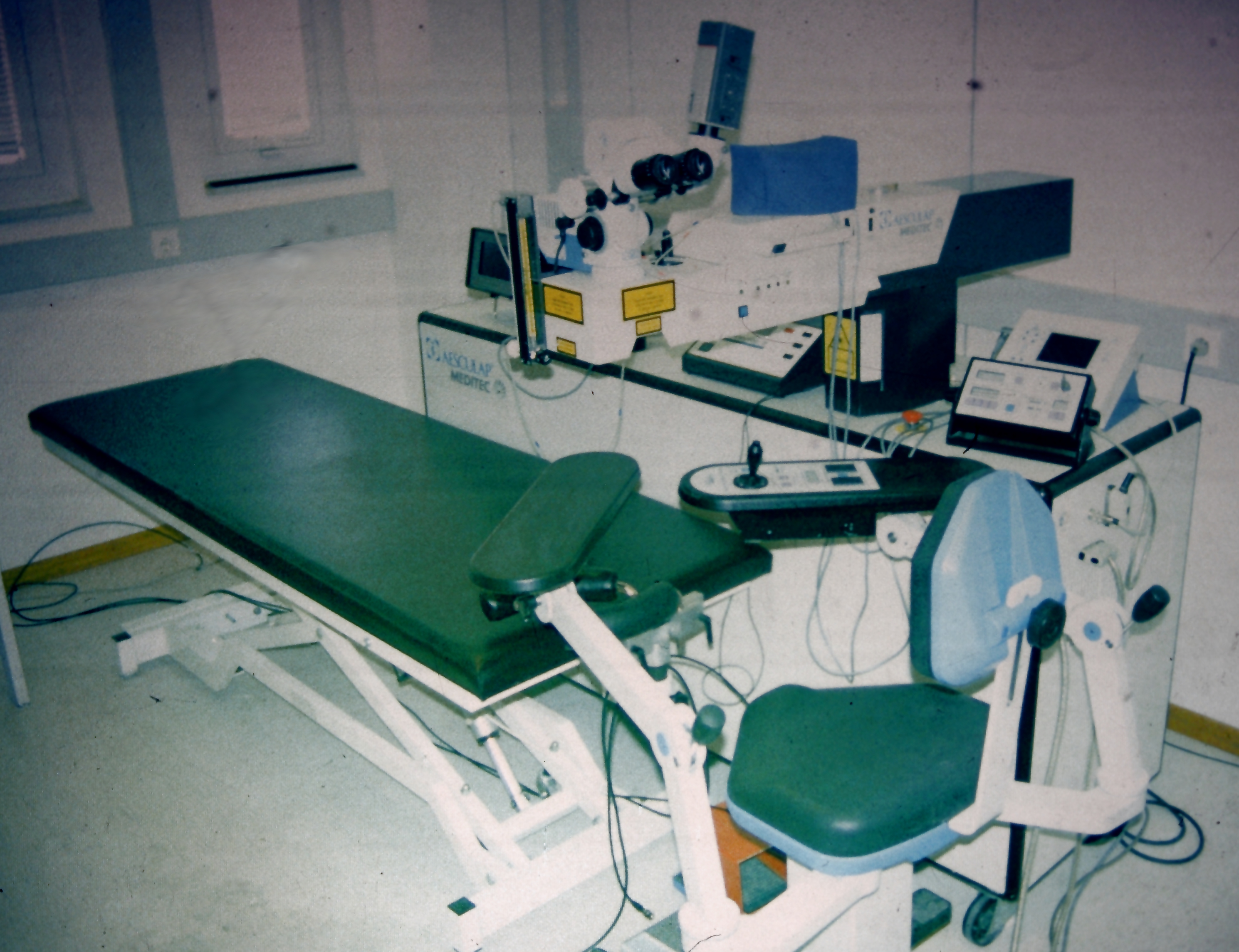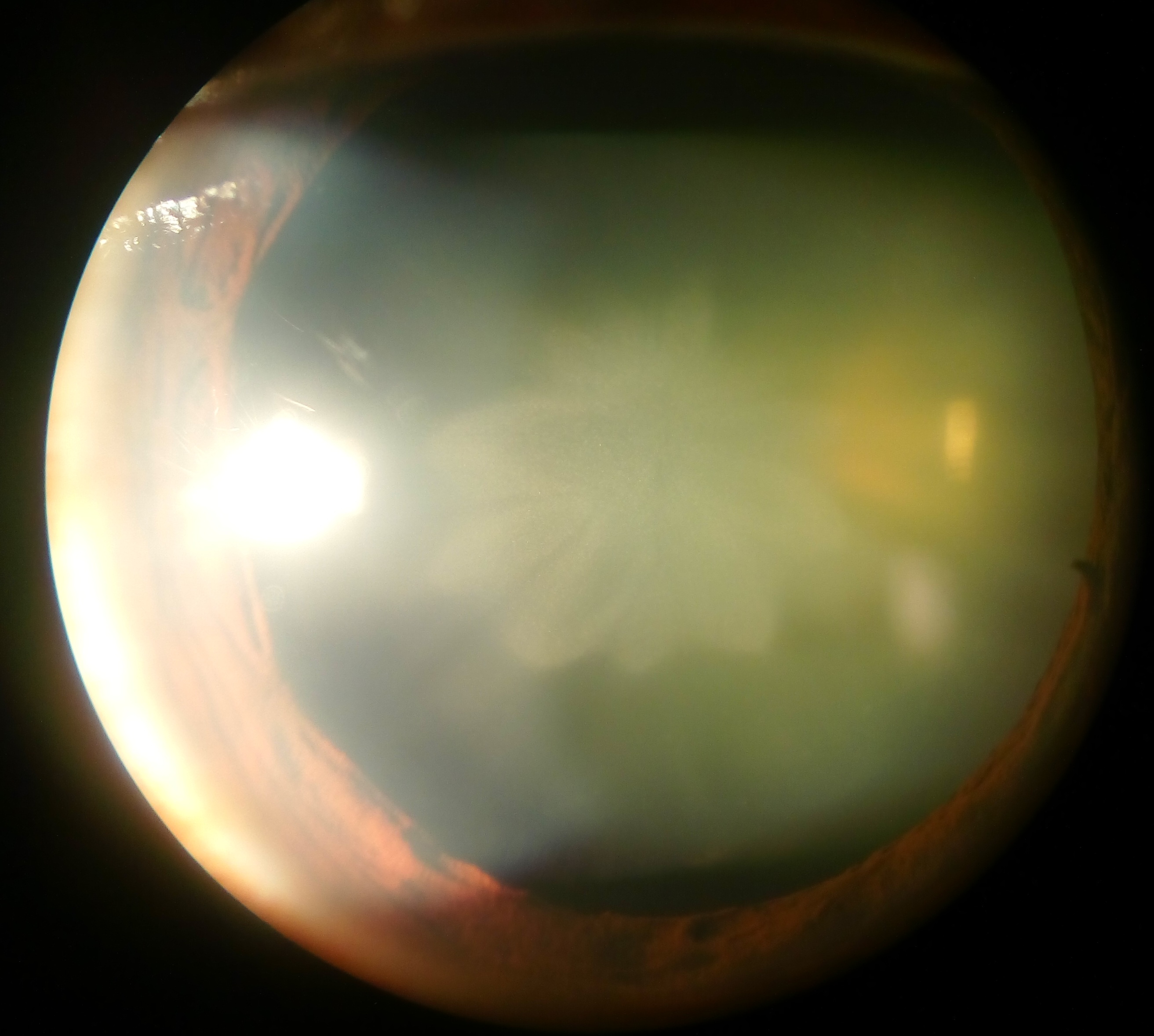|
Limbal Relaxing Incisions
Limbal relaxing incisions (LRI) are a refractive surgical procedure to correct minor astigmatism in the eye. Incisions part way through the cornea are made at one side or at opposite edges of the cornea, following the curve of the iris, causing a slight flattening of the cornea in that area. Because the incisions are outside of the field of view, they do not cause glare and other visual effects that result from other corneal surgeries like radial keratotomy. LRI have become the most common technique to correct astigmatism as part of cataract surgery. They are simpler and less expensive than laser surgery such as LASIK LASIK or Lasik (; "laser-assisted in situ keratomileusis"), commonly referred to as laser eye surgery or laser vision correction, is a type of refractive surgery for the correction of myopia, hyperopia, and astigmatism. LASIK surgery is p ... or photorefractive keratectomy and avoid the precise placement requirements of toric IOLs. Good results do not r ... [...More Info...] [...Related Items...] OR: [Wikipedia] [Google] [Baidu] |
Refractive Surgery
Refractive surgery is an optional eye surgery used to improve the refractive state of the eye and decrease or eliminate dependency on glasses or contact lenses. This can include various methods of surgical remodeling of the cornea ( keratomileusis), lens implantation or lens replacement. The most common methods today use excimer lasers to reshape the curvature of the cornea. Refractive eye surgeries are used to treat common vision disorders such as myopia, hyperopia, presbyopia and astigmatism. History The first theoretical work on the potential of refractive surgery was published in 1885 by Hjalmar August Schiøtz, an ophthalmologist from Norway. In 1930, the Japanese ophthalmologist Tsutomu Sato made the first attempts at performing this kind of surgery, hoping to correct the vision of military pilots. His approach was to make radial cuts in the cornea, correcting effects by up to 6 diopters. The procedure unfortunately produced a high rate of corneal degeneration, ... [...More Info...] [...Related Items...] OR: [Wikipedia] [Google] [Baidu] |
Astigmatism
Astigmatism is a type of refractive error due to rotational asymmetry in the eye's refractive power. The lens and cornea of an eye without astigmatism are nearly spherical, with only a single radius of curvature, and any refractive errors present can be corrected with simple glasses. In an eye with astigmatism, either the lens or the cornea is slightly egg-shaped, with higher curvature in one direction than the other. This gives distorted or blurred vision at any distance and requires corrective lenses that apply different optical powers at different rotational angles. Astigmatism can lead to symptoms that include eyestrain, headaches, and trouble driving at night. Astigmatism often is present at birth, but can change or develop later in life. If it occurs in early life and is left untreated, it may result in amblyopia. The cause of astigmatism is unclear, although it is believed to be partly related to genetic factors. The underlying mechanism involves an irregular c ... [...More Info...] [...Related Items...] OR: [Wikipedia] [Google] [Baidu] |
Cornea
The cornea is the transparency (optics), transparent front part of the eyeball which covers the Iris (anatomy), iris, pupil, and Anterior chamber of eyeball, anterior chamber. Along with the anterior chamber and Lens (anatomy), lens, the cornea Refraction, refracts light, accounting for approximately two-thirds of the eye's total optical power. In humans, the refractive power of the cornea is approximately 43 dioptres. The cornea can be reshaped by surgical procedures such as LASIK. While the cornea contributes most of the eye's focusing power, its Focus (optics), focus is fixed. Accommodation (eye), Accommodation (the refocusing of light to better view near objects) is accomplished by changing the geometry of the lens. Medical terms related to the cornea often start with the prefix "''wikt:kerat-, kerat-''" from the Ancient Greek, Greek word κέρας, ''horn''. Structure The cornea has myelinated, unmyelinated nerve endings sensitive to touch, temperature and chemicals; a to ... [...More Info...] [...Related Items...] OR: [Wikipedia] [Google] [Baidu] |
Iris (anatomy)
The iris (: irides or irises) is a thin, annular structure in the eye in most mammals and birds that is responsible for controlling the diameter and size of the pupil, and thus the amount of light reaching the retina. In optical terms, the pupil is the eye's aperture, while the iris is the diaphragm (optics), diaphragm. Eye color is defined by the iris. Etymology The word "iris" is derived from the Greek word for "rainbow", also Iris (mythology), its goddess plus messenger of the gods in the ''Iliad'', because of the many eye color, colours of this eye part. Structure The iris consists of two layers: the front pigmented Wikt:fibrovascular, fibrovascular layer known as a stroma of iris, stroma and, behind the stroma, pigmented epithelial cells. The stroma is connected to a sphincter muscle (sphincter pupillae), which contracts the pupil in a circular motion, and a set of dilator muscles (dilator pupillae), which pull the iris radially to enlarge the pupil, pulling it in folds. ... [...More Info...] [...Related Items...] OR: [Wikipedia] [Google] [Baidu] |
Radial Keratotomy
Radial keratotomy (RK) is a refractive surgery, refractive surgical procedure to correct myopia (nearsightedness). It was developed in 1974 by Svyatoslav Fyodorov, a Russian Ophthalmology, ophthalmologist. It has been largely supplanted by newer, more accurate operations, such as photorefractive keratectomy, LASIK, Epi-LASIK and the Intraocular lens#Intraocular lenses for correcting refractive errors, phakic intraocular lens. Procedure When performing RK, incisions are made with a diamond knife. The incisions relax the steep central cornea in patients with myopia in order to achieve a decreased need for correction. The original technique – consisting of incisions from periphery to center – was called the "Russian technique", while the later advances of performing controlled incision from center to periphery was called the "American technique".Gulani AC, Fyodorov S: Future Directions in Vision course, June 1997 RK may be performed with different types, numbers, and patterns of ... [...More Info...] [...Related Items...] OR: [Wikipedia] [Google] [Baidu] |
Cataract
A cataract is a cloudy area in the lens (anatomy), lens of the eye that leads to a visual impairment, decrease in vision of the eye. Cataracts often develop slowly and can affect one or both eyes. Symptoms may include faded colours, blurry or double vision, halos around light, trouble with bright lights, and Nyctalopia, difficulty seeing at night. This may result in trouble driving, reading, or recognizing faces. Poor vision caused by cataracts may also result in an increased risk of Falling (accident), falling and Depression (mood), depression. Cataracts cause 51% of all cases of blindness and 33% of visual impairment worldwide. Cataracts are most commonly due to senescence, aging but may also occur due to Trauma (medicine), trauma or radiation exposure, be congenital cataract, present from birth, or occur following eye surgery for other problems. Risk factors include diabetes mellitus, diabetes, longstanding use of corticosteroid medication, smoking tobacco, prolonged exposu ... [...More Info...] [...Related Items...] OR: [Wikipedia] [Google] [Baidu] |
LASIK
LASIK or Lasik (; "laser-assisted in situ keratomileusis"), commonly referred to as laser eye surgery or laser vision correction, is a type of refractive surgery for the correction of myopia, hyperopia, and astigmatism. LASIK surgery is performed by an ophthalmologist who uses a femtosecond laser or a microkeratome to create a corneal flap to expose the corneal stroma and then an excimer laser to reshape the corneal stroma in order to improve visual acuity. LASIK is very similar to another surgical corrective procedure, photorefractive keratectomy (PRK), and LASEK. All represent advances over radial keratotomy in the surgical treatment of refractive errors of vision. For people with moderate to high myopia or thin corneas which cannot be treated with LASIK or PRK, the phakic intraocular lens is an alternative. As of 2018, roughly 9.5 million Americans have had LASIK and, globally, between 1991 and 2016, more than 40 million procedures were performed. However, the ... [...More Info...] [...Related Items...] OR: [Wikipedia] [Google] [Baidu] |
Photorefractive Keratectomy
Photorefractive keratectomy (PRK) and laser-assisted sub-epithelial keratectomy (or laser epithelial keratomileusis) (LASEK) are laser eye surgery procedures intended to correct a person's vision, reducing dependency on glasses or contact lenses. LASEK and PRK permanently change the shape of the anterior central cornea using an excimer laser to ablate (remove by vaporization) a small amount of tissue from the corneal stroma at the front of the eye, just under the corneal epithelium. The outer layer of the cornea is removed prior to the ablation. A computer system tracks the patient's eye position 60 to 4,000 times per second, depending on the specifications of the laser that is used. The computer system redirects laser pulses for precise laser placement. Most modern lasers will automatically center on the patient's visual axis and will pause if the eye moves out of range and then resume ablating at that point after the patient's eye is re-centered. The outer layer of the corne ... [...More Info...] [...Related Items...] OR: [Wikipedia] [Google] [Baidu] |
Toric Intraocular Lens
An intraocular lens (IOL) is a lens implanted in the eye usually as part of a treatment for cataracts or for correcting other vision problems such as near-sightedness (myopia) and far-sightedness (hyperopia); a form of refractive surgery. If the natural lens is left in the eye, the IOL is known as ''phakic'', otherwise it is a ''pseudophakic'' lens (or false lens). Both kinds of IOLs are designed to provide the same light-focusing function as the natural crystalline lens. This can be an alternative to LASIK, but LASIK is not an alternative to an IOL for treatment of cataracts. IOLs usually consist of a small plastic lens with plastic side struts, called haptics, to hold the lens in place in the capsular bag inside the eye. IOLs were originally made of a rigid material ( PMMA), although this has largely been superseded by the use of flexible materials, such as silicone. Most IOLs fitted today are fixed monofocal lenses matched to distance vision. However, other types are availab ... [...More Info...] [...Related Items...] OR: [Wikipedia] [Google] [Baidu] |





